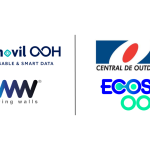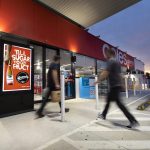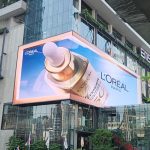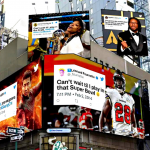The following is an opinion piece by Broadsign General Manager APAC, Remi Roques
From a visual perspective, you could assume the static billboard business hasn’t changed much. But peel back the vinyl and you’ll find a whole lot of innovation going on. And there’s nothing static about it.
There have been significant advances in the physical infrastructure of billboards — with developments in lighting, materials, and branding. At the same time, major improvements have been made to the back end, with the implementation of operational technology that can support everything from sales to installation.
Together, these innovations provide game changing efficiency, effectiveness and value to each and every campaign, all while increasing opportunities for advertising companies and network owners alike.
If you want your static OOH business to stand out, here’s how:
Streamline your sales and distribution
Everyone loves a good Excel spreadsheet… in theory. That love tends to vanish pretty quickly when you’re juggling multiple complex contracts, design and print jobs, and posting and maintenance schedules all at the same time. Excel can do the job, but it won’t be pretty.
Thankfully, dedicated OOH business management platforms exist to streamline all of this. They can gather real-time inventory and pricing information, develop proposals and complete sales in a couple of clicks. They can also generate print schedules and work orders automatically, which then appear in your business’ calendar and your field teams’ installation schedules.
They basically support the core activities of your business, delivering convenience, consistency, synchronisation, speed and clarity.
It’s no surprise that adtech platforms have become the single most impactful and indispensable tool that a medium or large OOH businesses can incorporate.
Provide proof of posting
When a digital ad goes live, it’s instantly available for client review. Obviously static OOH doesn’t have the same advantage. Or does it?
Today, visual validation can be made available through proof-of-posting apps. These apps are used by the field team at the billboard site to take photos and add details like the time, date and geographic coordinates.
This information syncs automatically into the OOH company’s system, ready for the client to review.
This feature can make a big, positive impact. Not only does it indicate reliability, but it also helps to meet modern clients’ expectations of transparency. This is especially relevant for customers who are used to buying digital media.
Invest in smooth operations
With so many moving parts, delivering a campaign is one of the biggest challenges in the static OOH space.
Again, multiple Excel spreadsheets can technically do the job. However, it’s reassuring to know there are dedicated operational tools that can coordinate the entire process and make it much more pleasant.
The most advanced platforms let users know when an ad is off to print, in storage, ready for pick up, being posted, or due to be taken down. They reduce the risk of errors and free up employees to focus on other areas.
“When time is money and communication is key, tools such as these pay for themselves many times over.”
Go digital
Standing out in advertising has always been a challenge. With technology developing so rapidly, it’s becoming even easier to get left behind.
Keeping up requires investment and in OOH marketing terms, that means going digital.
Adopting a digital-out-of-home platform provides a whole different level of opportunity. The “Stopping Power” of DOOH alone is incredibly attractive to clients, but so are the visual power of high-quality screens and the ability to integrate with mobile devices, the internet and social networks. On the operational side, it’s also a lot more convenient to upload and update remotely, which can help reduce costs.
This is just scratching the surface. With DOOH technology advancing all the time, more and bigger benefits are sure to arise.
Be sustainable
We know static OOH businesses produce a lot of waste, as well as carbon emissions from transportation. However, there are still ways to increase sustainability.
Transitioning to digital is one, but in the meantime, you could donate old polyvinyl billboards to charities or local businesses, install recyclable polyethylene billboards instead of polyvinyl, replace fluorescent lights with LEDs, or invest in solar-powered lighting or electric or hybrid vehicles for field teams.
It’s likely that buyers will want to see these changes too, as more clients want to feel good about the businesses they choose to work with. Some will actively seek out companies that strive to minimise their environmental impact.
Taking the time to invest in sustainability now is sure to pay off in the future.
As will any of these game-changing OOH transitions. Such investments in OOH operations will pave the way to future-proof the medium.
If you would like to know how to get your start and see your business succeed with DOOH download our comprehensive 6-step guide right here.
MARKETING Magazine is not responsible for the content of external sites.
After 20 years of evolving technology, shifting market trends, and adapting to changing consumer behaviour, the media landscape has nearly reached saturation.
We’ve optimised to the fullest, providing advertisers with abundant choices across technology, platforms, data-driven marketing, CTV, OTT, DOOH, influencer marketing, retail, etc.
Media specialists have diversified, but with more options comes the challenge of maintaining income growth. The industry is expanding, but revenue isn’t keeping pace.
Now, we’re at a TURNING POINT: time to explore and harness new sustainable revenue streams. While GroupM forecasts a 7.8% global ad revenue growth in 2024, challenges like antitrust regulation, AI and copyright issues, and platform bans persist.
Collaboration is key: partnerships that thrive on synergy, shared values, and aligned goals are becoming increasingly essential.
Hence, the Malaysian Media Conference, in its 20th year, has assembled the partners and players under one roof on October 25 for a day of learning, sharing, and exploring.
REGISTER NOW










